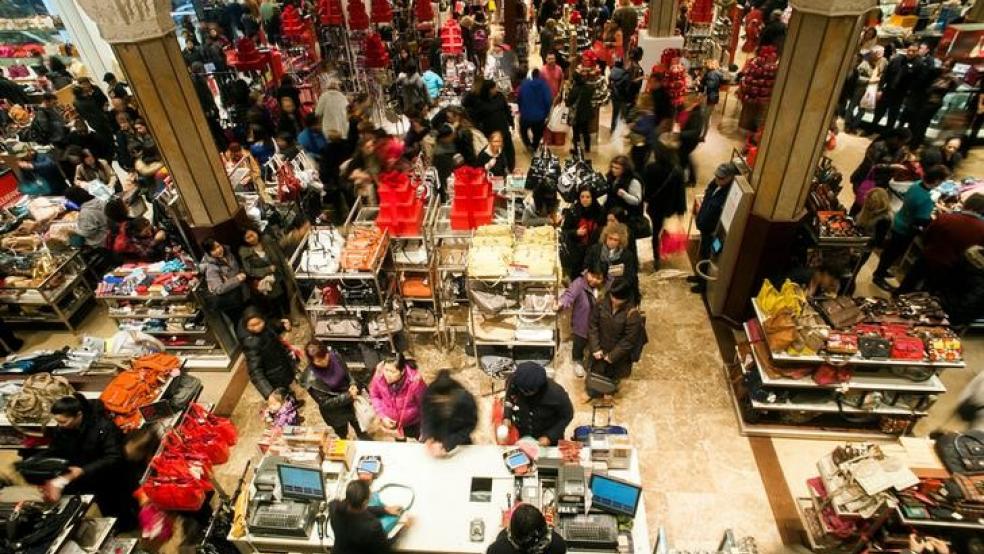WASHINGTON (Reuters) - U.S. retail sales increased more than expected in November as the holiday shopping season got off to a brisk start, pointing to sustained strength in the economy that could pave the way for further Federal Reserve interest rate hikes next year.
The economic outlook was also bolstered by other data on Thursday that showed the number of Americans filing for unemployment benefits dropping to near a 44-1/2-year low last week.The Fed offered a rosy assessment of the economy in its latest policy statement on Wednesday, describing activity as "rising at a solid rate." The U.S. central bank raised borrowing costs for a third time this year and forecast three rate increases for 2018.The Commerce Department said retail sales rose 0.8 percent last month, with households buying a range of goods even as they cut back on purchases of motor vehicles. Data for October was revised to show sales gaining 0.5 percent instead of the previously reported 0.2 percent increase. Retail sales accelerated 5.8 percent on an annual basis. Economists polled by Reuters had forecast retail sales increasing only 0.3 percent in November. The dollar <.dxy> rose against a basket of currencies after the release of the data, while prices for U.S. Treasuries fell. U.S. stocks were trading higher.Last month, sales at gardening and building material stores jumped 1.2 percent after slipping 0.1 percent in October. That helped to offset a 0.2 percent drop in receipts at auto dealerships. Retail sales were also lifted by a 2.8 percent gain in sales at service stations, which reflected higher gasoline prices. Excluding automobiles, gasoline, building materials and food services, retail sales jumped 0.8 percent last month after climbing 0.4 percent in October. These so-called core retail sales correspond most closely with the consumer spending component of gross domestic product.STRONG CONSUMER SPENDINGLast month's increase in core retail sales suggested a strong pace of consumer spending in the fourth quarter. Consumer spending, which accounts for more than two-thirds of U.S. economic activity, is being supported by steady wage gains as the labor market tightens.In a separate report, the Labor Department said initial claims for state unemployment benefits dropped 11,000 to a seasonally adjusted 225,000 for the week ended Dec. 9. That was the lowest reading since mid-October when claims dropped to 223,000, a level not seen since March 1973.Last week marked the 145th straight week that claims remained below the 300,000 threshold, which is associated with a strong labor market. That is the longest such stretch since 1970, when the labor market was smaller.Fed Chair Janet Yellen told reporters on Wednesday that the central bank expected the "labor market to remain strong, with sustained job creation, ample opportunities for workers, and rising wages." The economy added 228,000 jobs in November. Consumer spending increased at a 2.3 percent annualized rate in the third quarter, contributing to the economy's 3.3 percent growth pace during that period. Spending could get a lift from the Trump administration's plan to lower income taxes. But with the bulk of the tax relief expected to go to high-income households, economists caution that the boost might be limited. Last month, sales at electronics and appliance stores increased 2.1 percent. Receipts at clothing stores rose 0.7 percent in November. Retailers, including Macy's Inc,U.S. retail sales surge; weekly jobless claims fall

Keith Bedford



